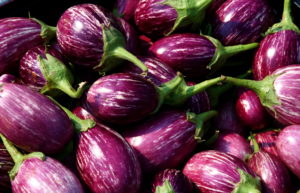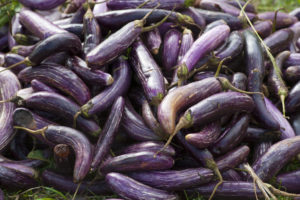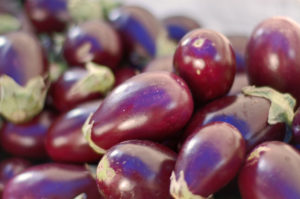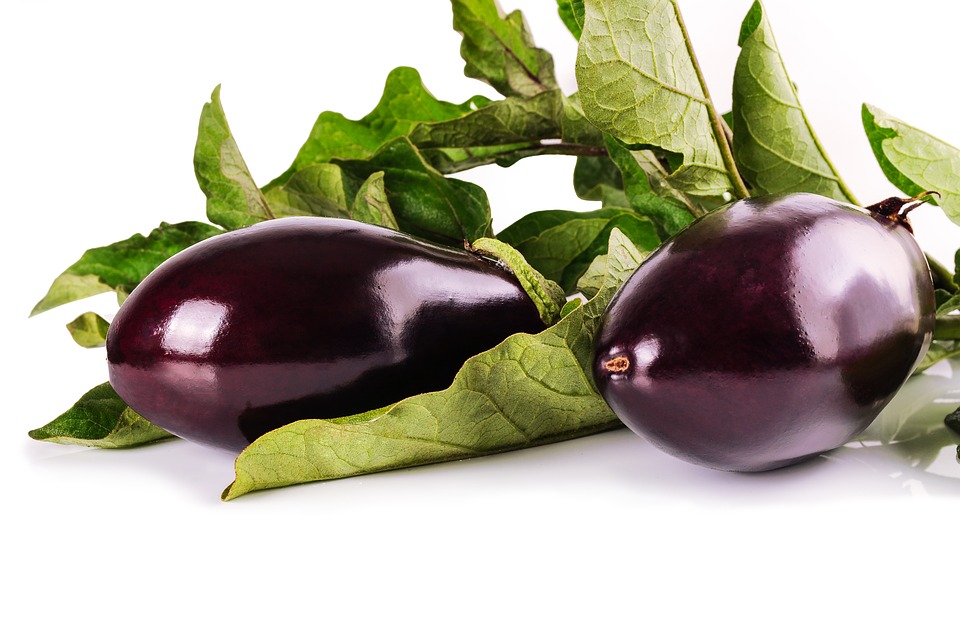Eggplant, or aubergine, is a species of nightshade grown for its edible fruit. Eggplant is the common name in North America, Australia and New Zealand; in British English, it’s aubergine and in South Asia and South Africa it’s brinjal. Take a look below for 25 more fun and interesting facts about eggplants.
1. As a member of the genus Solanum, the eggplant is related to the tomato and the potato.
2. Eggplant was originally domesticated from the wild nightshade species, the thorn or bitter apple, Solanum incanum.
3. Eggplant has been cultivated in southern and eastern Asia since prehistory.
4. The first known written record of eggplant is found in Qimin Yaoshu, an ancient Chinese agricultural treatise completed in 544.

5. The numerous Arabic and North Africa names for eggplant, along with the lack of the Ancient Greek or Roman names, indicate that it was introduced throughout the Mediterranean area by the Arabs in the early Middle Ages.
6. A book on agriculture by Ibn-Al-Awwam in 12th century Arabic Spain described how to grow eggplants.
7. Because of the eggplant’s relationship with various other nightshades, the fruit was once believed to be extremely poisonous.
8. The flowers and leaves of an eggplant can be poisonous if eaten in large quantities as they do have solanine in them.
9. In 13th century Italian traditional folklore, it’s said that eggplants can cause insanity.
10. In 19th century Egypt, insanity was said to be more common and more violent when the eggplant is in season in the summer.
11. There are around 770 varieties of eggplant that can be found in tropical and sub-tropical areas around the world.

12. Eggplant has a spiny stem that can grow from 16 to 57 inches in height.
13. Eggplant develops large green and deeply lobed leaves.
14. It produces star shaped, white or purple flowers. The flowers contain both types of reproductive organs, pistil and stamens, and can perform self-pollination.
15. The fruit of eggplant belongs to a group of berries. The most popular types of eggplant are oval shaped and covered with smooth, glossy, purple colored skin. The flesh is whitish or creamy colored and has a spongy texture.
16. Some varieties of eggplant produce white, lavender, green or red-striped fruit that can be elongated, rounded or pea-shaped.

17. The size of the eggplant depends on its variety, but on average, it ranges from 1.2 to 12 inches in length.
18. Eggplants have numerous miniature seeds. The seeds have a bitter taste due to a high content of nicotine. In fact, eggplant contains the highest level of nicotine compared to other edible plants.
19. Eggplant has a short vegetative season. Harvest usually takes place 60 days after planting and it requires high temperature for proper growth and development.
20. The fruit is a rich source of dietary fibers, vitamins C, K and vitamins of the B group, and minerals such as copper, phosphorus and magnesium.
21. The name “eggplant” originates from the 18th century when cultivars with small, white fruit, shaped like a hen’s egg were popular.
22. Juice made from leaves and roots of eggplant can be used in the treatment of throat and stomach disorders, cough, asthma, toothache, rheumatism and skin problems.

23. Eggplants get their purple skin due to the anthocyanin nasunin.
24. The browning of eggplant flesh results from the oxidation of polyphenols, such as the most abundant phenolic compound in the fruit, chlorogenic acid.
25. People who are atopic are more likely to have a reaction to eggplant, which may be because eggplant is high in histamines.




